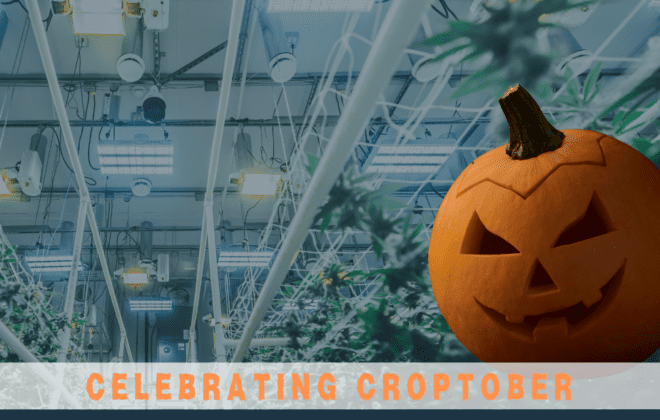Nutrients Part 2: Empowering Commercial Growers with the Science Behind Calcium and Potassium

Growing cannabis is a combination of craft and science. It is about discovering the attributes of each plant, and bringing out their full genetic potential. Last week, we discussed two key nutrients, nitrogen and phosphorus, that play a critical role in this journey. However, these nutrients are only a part of the plant physiology puzzle. In this post, we are going to discuss Potassium (K), the third macronutrient of the NPK group, and a supporting player, Calcium whose potential is still being explored.
Potassium (K)
Potassium is the ultimate multitasker. This vital mineral plays a critical role in each of the plant’s growth stages. According to researcher Mark June Wells, an adequate amount of potassium is essential for healthy cannabis production, as this mobile mineral makes sure that micronutrients (Calcium, Iron, Magnesium) and water are transported throughout the plant. This is why the majority of potassium can be found in the root cells of the plant, basically, staying alert for minerals and water so that it can move them where they need to go.
Here are just a few additional tasks that this workhorse takes on:
-
Help synthesis proteins from DNA to messenger RNA
-
Transports water and nutrients throughout the plants
-
Helps the plant generate enough energy so that each cell gets exactly what it needs to get the job done
-
Increases the plant’s resiliency during periods of drought
-
Helps build the cell walls of the plant, increasing both the strength and consistency of these plant tissues
-
Increase the weight, density, and volume of cannabis buds.
Put it to the test:
In a research study conducted by Ahmad and Anjum, they investigated the role that potassium plays in helping combat stress from drought. It was discovered that this nutrient aids in opening and closing the stomata of the cell, osmotic adjustment, and enzyme activation.
Basically, potassium is the part of the plant structure that helps to optimize the physiological and biochemical processes in the plant.
It also plays a critical role in photosynthesis by opening up the stomata in the cells, so that carbon dioxide in the environment can be captured.
The Takeaway:
Potassium is often talked about during the flowering stage. However, 80% of the plant’s potassium is acquired during seed germination. This is why it’s important to provide your cannabis plants with a steady supply of potassium throughout their growth cycle, so the plant has enough of this vital nutrient to build a healthy plant structure and dense buds.
Calcium (CA)
If potassium is the workhorse, then calcium is the builder. This nutrient is found in the outer layer of the cell wall helping connect the cells and strengthen the plant tissues. It also helps the cell maintain homeostasis, helping plants cope in stressful situations.
Additional roles of Calcium
-
Separate genetic material during cell division
-
Maintains the structure of the plant
-
Assists with Gene Expression
Put it to the test:
Researcher Kathrin Thor wanted to discover the role that calcium played in helping plants cope with stressors. She discovered that calcium not only plays a large role in developing the plant’s structure but also acts as an internal messenger helping the plant respond to environmental stressors including triggering the plant’s immune system when exposed to pathogens.
Calcium is the unsung hero, this is partially because there is still not a lot of research on this mineral. However, the information that we do know about Calcium clearly demonstrates that this mineral is a vital contributor to healthy plant development.
The Takeaway:
This mineral helps your plant develop strong tissue and leaves, but it doesn’t stop there. Calcium provides your plants with superpowers triggering their immune system to help fight off parasites.
Understanding the role that nutrients play in plant health is a critical piece of the production puzzle. This knowledge presents commercial growers with the ability to adopt a more tailored approach to their growing operation so that the plants have the nutrients that they need in order to thrive.




